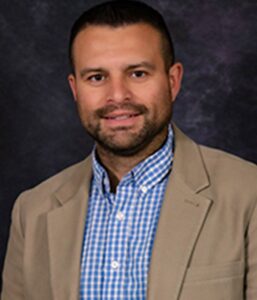What is platelet-rich plasma therapy (PRP)?

What is platelet-rich plasma therapy (PRP)? Is PRP utilized in orthopedics? Why have world-class athletes like Rafael Nadal, Alex Rodriguez, and Tiger Woods used the treatment?
PRP is considered a regenerative medicine technique. It is also considered an “orthobiologic” (along with stem cell therapy, prolotherapy, and others). PRP therapy involves taking a small sample of a patient’s blood via a standard blood draw. Next, the blood separates into various components by spinning it in a centrifuge. The blood separates into erythrocytes (red blood cells), leukocytes (white blood cells), platelets, and plasma. The erythrocytes and leukocytes discard, while the plasma is mixed with the platelets to produce platelet-rich plasma. This concentrated mixture of platelets is then injected into an area of damaged tissue, hoping to induce healing. Why would platelets cause healing? Because platelets contain vast quantities of growth factors. Epidermal growth factor, fibroblast growth factor, insulin-like growth factor, and vascular endothelial growth factor are just a few examples.
PRP
An advantage of PRP is that its autologous nature makes it very safe. It’s your blood! The problem is, although PRP has been around for over two decades, the jury is still out on its efficacy. The controversy lies in the few high-level studies in the medical literature about PRP. What makes matters worse is that studies cannot compare because PRP utilizes so many different pathologic settings. For example, PRP is used for ligaments, tendons, bones, and cartilage – even though each of these tissues is distinctive from a histologic standpoint.
There is no way to comprehensively review the literature on PRP in a brief blog post, but to summarize, the efficacy of PRP is limited and controversial for (1, 2, 3):
- acute ligament & tendon injuries
- fracture healing
- augmentation of rotator cuff repair
- chronic tendonopathies
- augmentation of ACL reconstruction (graft maturation)
- degenerative joint disease
- augmentation of meniscus repair
There are only two instances where PRP does have some evidence to support its use in orthopedics. The first is lateral epicondylitis/epicondylosis, known as “tennis elbow.” Several promising studies have shown improved pain scores and improved patient outcomes. The second case is improved knee function, decreased patellar tendon gap, and enhanced patient outcomes when PRP applies to the donor sites of bone-patellar tendon-bone grafts of patients with ACL reconstruction. But, again, PRP does not aid in ACL graft maturation, just in the direct application to the plug sites (1, 2, 3).
Since PRP remains controversial, it is generally not covered by health insurance plans that deem it ‘experimental.’ This results in PRP being an expensive out-of-pocket option for most people.
So, should you try PRP? That is a decision for you and your provider to make together. Do not let potentially deceitful clinicians out there trying to push you towards PRP haphazardly. It is undoubtedly not the first-line treatment for musculoskeletal injuries. But if you have been treating a nagging injury for many months with standard modalities and not getting any relief, then PRP might be an option that a subset of patients who can afford it would be willing to try. In the meantime, hopefully, more and more high-level studies will be conducted and published so that the efficacy of this therapy can continue to reveal itself.
Skin Bones CME Conferences
Hit the reset button while earning continuing medical education credits at our CME conferences, where you can travel to a vacation destination; earn CME credits with like-minded nurse practitioners, physician assistants, and physicians; and ‘unplug’ while enjoying a new locale! Check out our upcoming Skin, Bones, Hearts & Private Parts 2023 CME Conferences and 2024 CME Conferences! At every event, the best of the medical community gathers to earn CME credits, network, and gain knowledge on dermatology, orthopedics, cardiology and emergency medicine, women’s health, pain management and pharmacology, diabetes, ER, and mental health. On-line CME courses and Virtual CME are also available so you have the option of earning CME credits online.
See Gerald Weniger, PhD, ATC, PA-C speak at a 2022 Skin, Bones, Hearts & Private Parts CME Conference. Click here to find out where you can see him live and in-person!
References
- Cook J, Young M, Fricker P, Grayzel J. Biologic therapies for tendon and muscle injury. UpToDate. August 27, 2020.
- Fitzpatrick J, Bulsara M, Zheng MH. The effectiveness of platelet-rich plasma in the treatment of tendinopathy: a meta-analysis of randomized controlled clinical trials. American Journal of Sports Medicine. 2017. Jan; 45(1)226-233.
- Roberts WN, Furst DE, Curtis MR. Intraarticular and soft tissue injections: What agent(s) to inject and how frequently? May 11, 2020.